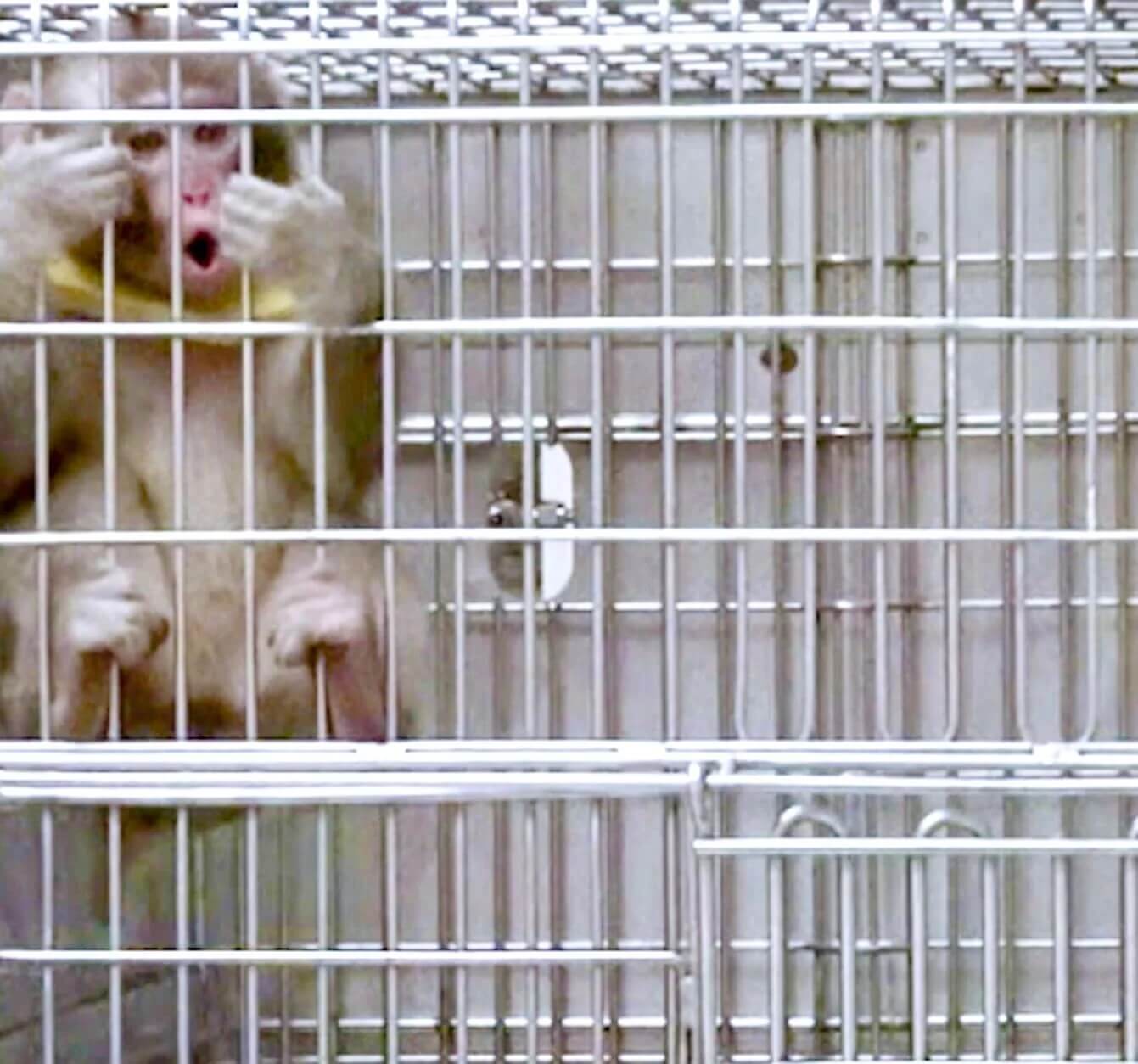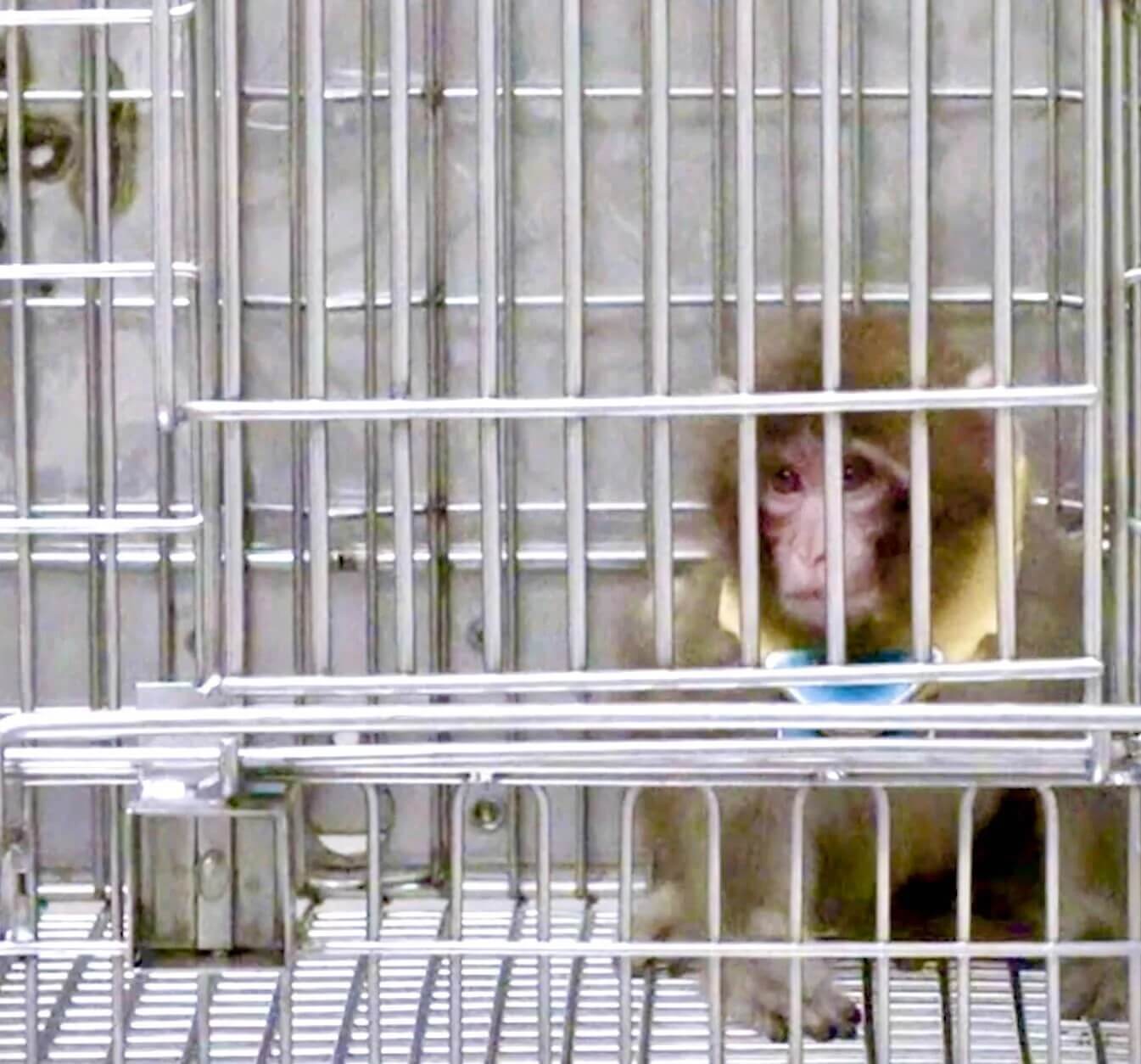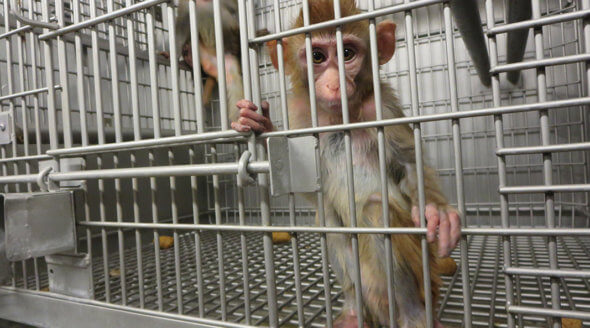VIDEO: The Cruel Monkey Experiments the Lab Didn’t Want You to See
The abuse at the Oregon National Primate Research Center (ONPRC) in the US is so grotesque and prolific that adjectives simply fail to describe the horror accurately. That’s why, for the past 20 years, PETA US has released numerous truly disturbing videos shot inside the ONPRC, including never-before-seen footage that the group just obtained following a legal battle.
Prying Footage out of Their Cruel, Speciesist Hands
After learning that an experimenter at the ONPRC had recorded video footage of “junk food” experiments on monkeys, PETA US requested these recordings. But Oregon Health & Science University (OHSU), the publicly funded university that administers the ONPRC, denied the request and fought tooth and nail to keep the footage from seeing the light of day.
PETA US sued. And now you can see what the experimenters were trying to hide.
Tormenting Monkeys
The video was taken in a laboratory where the experiments involve impregnating Japanese macaques, feeding some of the expectant mothers high-fat food, separating the babies from their mothers, and deliberately frightening the infants. Experimenters kill most of – if not all – the young monkeys at 13 months old and study their brains.
The videos show the human intruder test. Terrified young monkeys are removed from their “home” environment, which had included their mother and/or friends; taken to a different room; and placed alone in a small, barren, unfamiliar cage. Some of the young monkeys were so upset and traumatised by this sudden separation that they would desperately fling themselves about the cage. Others remained nearly motionless, too terrified to move. An experimenter then makes threatening gestures, such as prolonged eye contact, to determine whether the young monkeys can be intimidated.
Aside from their obvious cruelty, these experiments are so scientifically flawed that they are essentially meaningless, experts say, destroying monkeys’ lives and wasting taxpayer money.
Dr Lisa Jones-Engel, a primatologist who reviewed the recordings and associated research publications, believes the experiments introduce far too many unaccounted-for variables. It is highly likely that the differences in monkeys’ reactions to scary stimuli were produced not by the experimental dietary changes but simply by differences in how the monkeys were reared. For macaque infants, their mothers’ rank in the group has a significant and lifelong impact on their own socialisation and temperament. The dozens of infant monkeys used in the experiments were raised in remarkably diverse social and rearing conditions. These fundamental variables, Jones-Engel says, have “profound implications” that render the findings hopelessly confounded and useless.
This laboratory doesn’t just torment infant monkeys. In 2010, the same year it published an experiment in which the brains of monkey foetuses were removed and full-term baby monkeys were deliberately frightened with a Mr Potato Head toy, it published studies looking at the effect of exercise and diet on female adult monkeys. In these studies, experimenters cut off the heads of 11 adult monkeys – “quickly decapitated” them, in euphemistic laboratory-speak – and removed their brains. And in another, monkeys were forced to run on treadmills at increasing speeds until they collapsed from exhaustion.
In 2018, the same laboratory published the results of an experiment in which half the female monkeys’ pregnancies ended in miscarriage because the animals, who thrive on a clearly delineated hierarchical structure, were thrown together as strangers, resulting in “an unstable group environment”.
That same year, it published an experiment in which 7-month-old monkeys were killed by exsanguination, a laboratory euphemism meaning “bleeding to death”, and another in which 14-month-old monkeys were killed the same way.
Decades of Documented Suffering
Tormenting monkeys is common practice at the ONPRC.
For 40 years, an experimenter there has injected pregnant rhesus monkeys with nicotine or surgically implanted nicotine pumps in their backs in order to observe the drug’s effects on their babies. In one study, the experimenter pumped pregnant monkeys with high doses of vitamin C, removed their foetuses, and performed invasive “lung function” tests on them, prior to killing and dismembering them.
The facility itself has a decades-long record of incompetence and cruelty, according to inspection reports obtained by PETA US. Recent events include the following:
- A young monkey was euthanised after she became trapped in PVC pipes.
- Workers failed to give pain medications to a monkey after he was used in an experimental surgery.
- A juvenile monkey died after OHSU workers failed to notice that he was trapped behind a cage.
- A monkey’s tail had to be amputated after he was carelessly moved from one cage to another and some of his skin was painfully torn from a portion of his tail.
- A monkey who was on a list prohibiting her use in experimental surgery was subjected to a caesarean section and an embryo transfer anyway because of negligence, incompetence, and a lack of oversight.
Experimenters have deviated from approved protocols, exposing monkeys to additional pain and distress. Two primates were burned by an electric heating pad that wasn’t monitored adequately. Two monkeys were found unresponsive after they were given the wrong dose of insulin, and one had to be euthanised. One inspection report said that more than half the rhesus macaques had “significant” hair loss – an indication that they were suffering from extreme psychological distress.
Monkeys Are Used in Experiments in the UK, Too – Help Them
In 2019, the most recent year for which we have data, 2,156 procedures using primates took place in Great Britain. It’s time to relegate these cruel experiments to the history books.
We must shift away from all procedures using animals. Sign our petition to support PETA’s Research Modernisation Deal.






